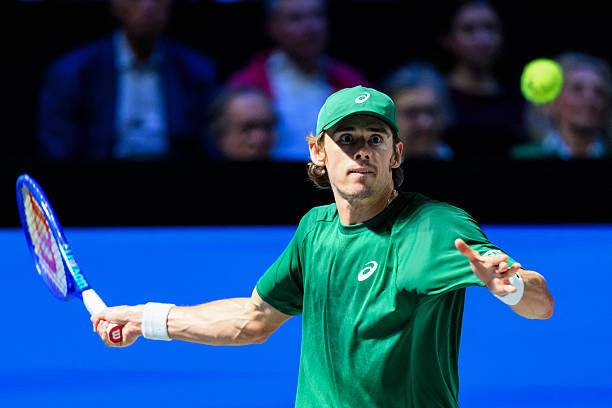FINDING THE BALANCE BETWEEN LINESPEOPLE AND HAWKEYE
- brett84123
- May 22, 2022
- 3 min read

We’ve all sat back and watched a game of tennis, engrossed in a long rally, back and forth, a forehand down the line – OUT! – “oh no way, I reckon that caught a bit of the line?!”.
How often have we had those discussions either at the court or on our couches and often we get the theatre of a line call challenge and the inevitable oohing and ahhing of the crowd that falls as Hawkeye hones in on the line call to give us the answer.
I think it’s a great part of our game, and for one I found myself missing it as we see the increase in the use of electronic line calling.
Throughout the height of the pandemic, having as little amount of people as possible on the court was optimal, therefore we saw linespeople replaced by Hawkeye, one of the electronic line callers.
Now maybe I’m just a traditionalist, but I love the human imperfection that comes with the linespeople. Don’t get me wrong, I love that we have Hawkeye there to call upon when we don’t agree with a call, but the human element of our line calling is something I hope is not a thing of the past.
We love the theatre, we love the interaction and I think there’s something in the viewing experience of the linesperson’s call not being final. Will they challenge that? Gee, do you reckon that caught the outside of the line? No way that was clearly out. And then the anticipation of the final result. And c’mon, what crowd doesn’t love when Hawkeye zooms right in as it shows the ball missing the line by 1mm.
It’s not just this part of the linespeople that I feel adds plenty to our game. The visual make-up of our court, the occasional catching of a ball from a linesperson, the ever so slight, but very important, lean to the side as a linesperson avoids a rocket serve down the tee. These are small things in our game, but I personally feel they add plenty to the experience.
Technology is an ever-increasing part of sport, but I think we should be mindful of not replacing too many parts of our game with technology, simply because it’s easier. I’m sure there would be some people that would simply say, well why not have every call 100% right if we can do so? Like I said, maybe it’s the traditionalist inside of me, but I like the aesthetics of linespeople walking out onto the courts, opening the new can of balls.
The First Serve spoke to ITF Senior Director of Major Events and Strategy Kris Dent about the topic. Dent said while there is currently a mix between the human involvement and technology at the top level, the feedback has been that the two in combination lends itself to best practice from the feedback he has received.
“The benefits during Covid were very obvious and helped to get us back playing at the top-level, arguably sooner than we might have been able to,” Dent said.
“What we’ve seen is a strong preference across many tournaments that the combination of line umpires with technology is the best outcome. You have both the human element and the technological support and I think we’re going to see that for a considerable amount of time at the majority of events, particularly at Challenger level and below that.
“That’s not to say there won’t be potentially changes at Masters 1000 events and above, some are some still using it this season, some haven’t, two of the grand slams have used, two have been very clear they won’t. At the moment it’s a limited amount and clearly those line umpires that don’t have those job opportunities, there are still other roles that they can play… at that international level we have a good balance.”
To implement electronic line calling on a court costs around $25,000 US dollars, meaning there will always be a need for linespeople. Dent added that many chair umpires begin as a linesperson, this being a key part of umpire development.
It will be interesting to see the advancement and progression of our line calling in the coming years. Hopefully, we can find the right balance and there is always a place in our game for linespeople.














Comments